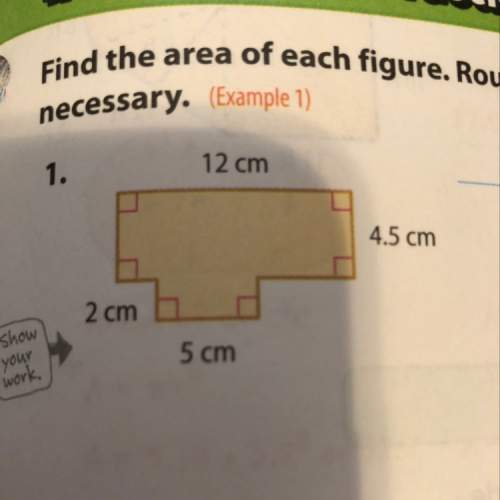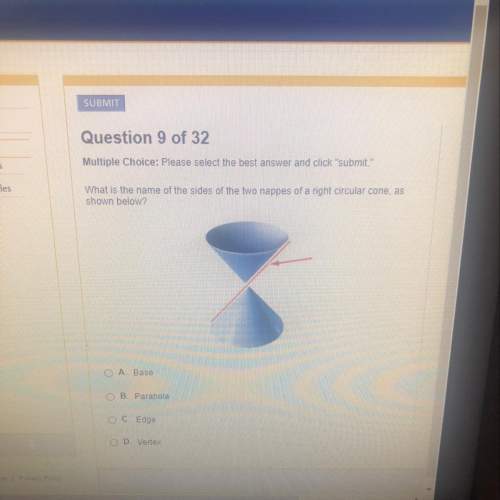
Mathematics, 23.05.2020 04:01 chrissy5189
Given: Lines p and q are parallel and r is a transversal. Prove: ∠2 ≅ ∠7 Parallel lines p and q are cut by transversal r. On line p where it intersects with line r, 4 angles are created. Labeled clockwise, from the uppercase left, the angles are: 1, 2, 4, 3. On line q where it intersects with line r, 4 angles are created. Labeled clockwise, from the uppercase left, the angles are: 5, 6, 8, 7. A 2-column table with 4 rows. Column 1 is labeled statements with the entries p is parallel to q and r is a transversal, A, B, angle 2 is congruent to angle 7. Column 2 is labeled reasons with the entries given, vertical angles are congruent, correlated angle theorem, transitive property. Which statements could complete the proof? A: B:

Answers: 3


Other questions on the subject: Mathematics

Mathematics, 21.06.2019 20:30, psychocatgirl1
Answer asap evaluate 4-0.25g+0.5h4−0.25g+0.5h when g=10g=10 and h=5h=5.
Answers: 3

Mathematics, 21.06.2019 22:00, Jasten
Set $r$ is a set of rectangles such that (1) only the grid points shown here are used as vertices, (2) all sides are vertical or horizontal and (3) no two rectangles in the set are congruent. if $r$ contains the maximum possible number of rectangles given these conditions, what fraction of the rectangles in set $r$ are squares? express your answer as a common fraction.
Answers: 1

Mathematics, 21.06.2019 22:30, dakotaadkins20
Find the area of the region that is inside r=3cos(theta) and outside r=2-cos(theta). sketch the curves.
Answers: 3

Mathematics, 21.06.2019 23:30, bbby2
Aprisoner is trapped in a cell containing three doors. the first door leads to a tunnel that returns him to his cell after two days of travel. the second leads to a tunnel that returns him to his cell after three days of travel. the third door leads immediately to freedom. (a) assuming that the prisoner will always select doors 1, 2 and 3 with probabili- ties 0.5,0.3,0.2 (respectively), what is the expected number of days until he reaches freedom? (b) assuming that the prisoner is always equally likely to choose among those doors that he has not used, what is the expected number of days until he reaches freedom? (in this version, if the prisoner initially tries door 1, for example, then when he returns to the cell, he will now select only from doors 2 and 3.) (c) for parts (a) and (b), find the variance of the number of days until the prisoner reaches freedom. hint for part (b): define ni to be the number of additional days the prisoner spends after initially choosing door i and returning to his cell.
Answers: 1
You know the right answer?
Given: Lines p and q are parallel and r is a transversal. Prove: ∠2 ≅ ∠7 Parallel lines p and q are...
Questions in other subjects:



Mathematics, 02.02.2021 08:50


English, 02.02.2021 08:50

Mathematics, 02.02.2021 08:50

Biology, 02.02.2021 08:50



Mathematics, 02.02.2021 08:50





